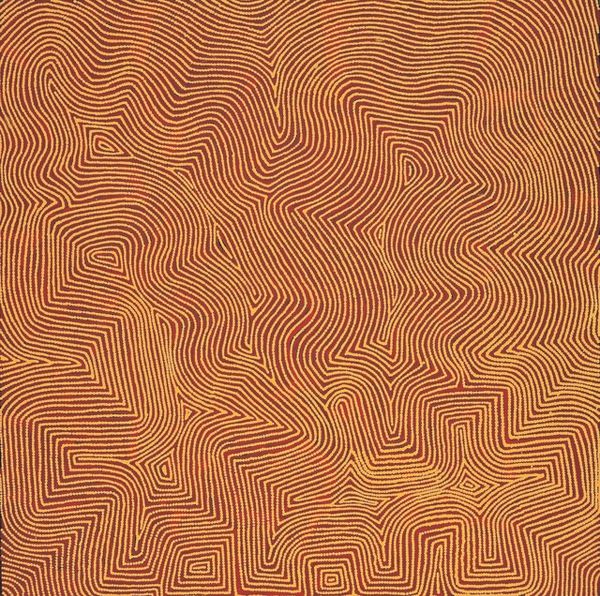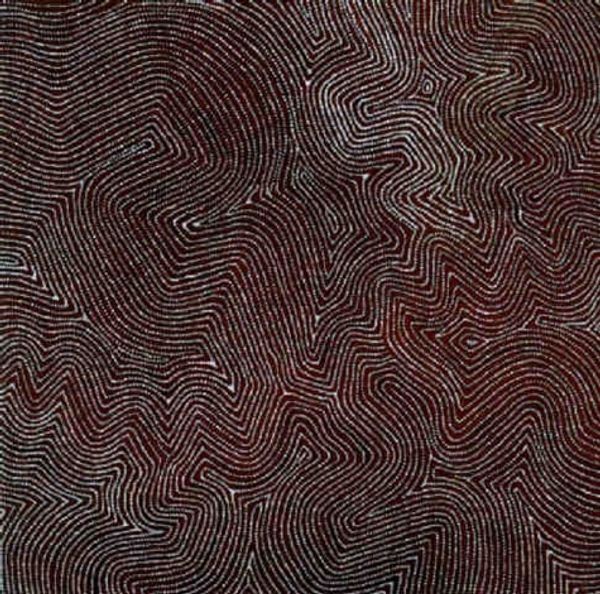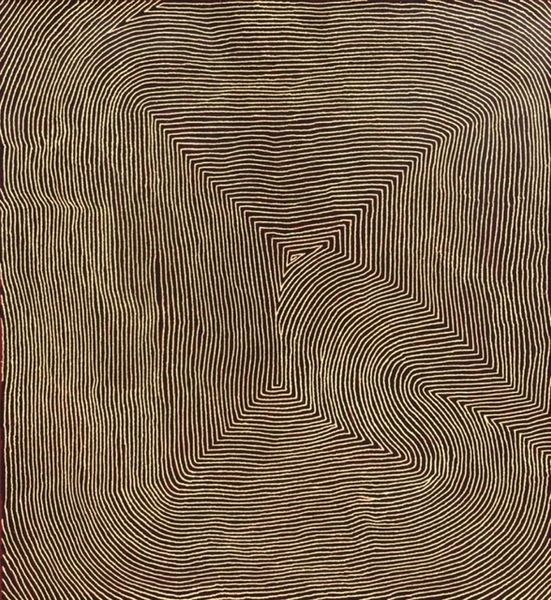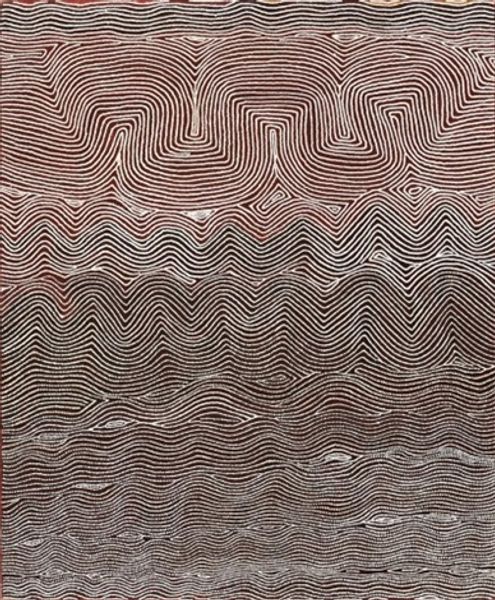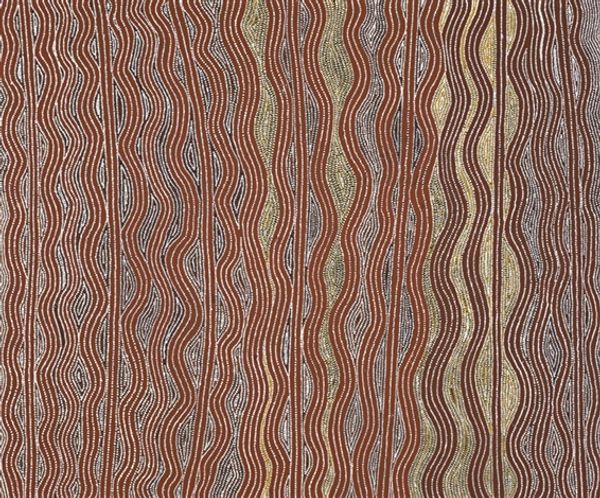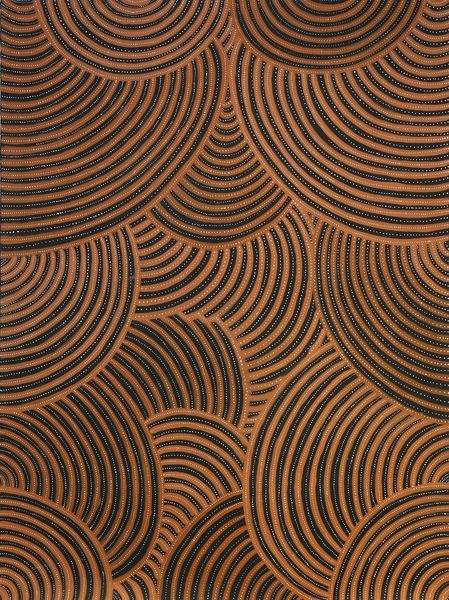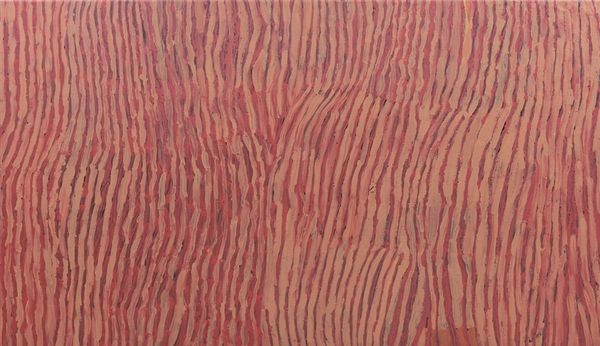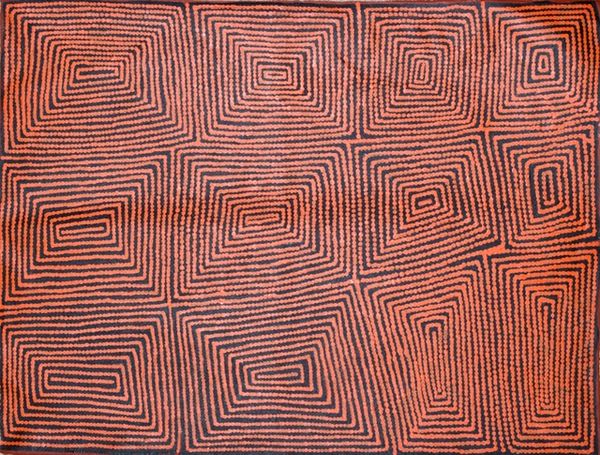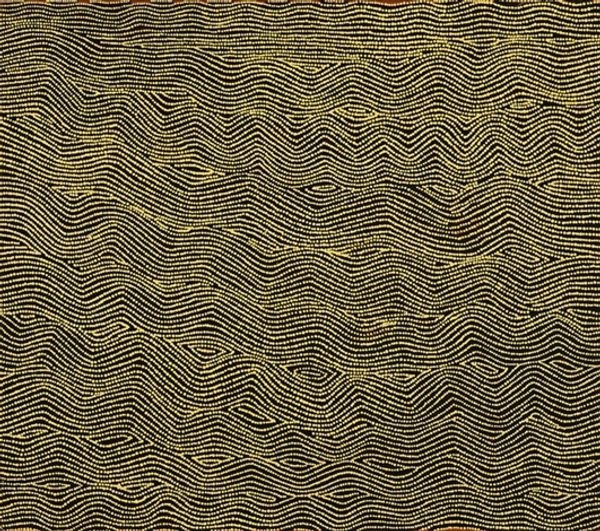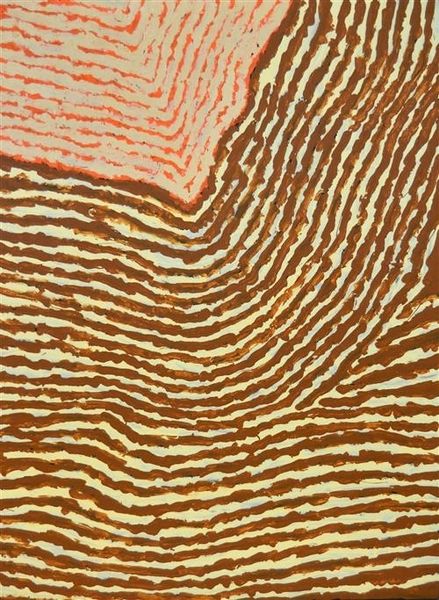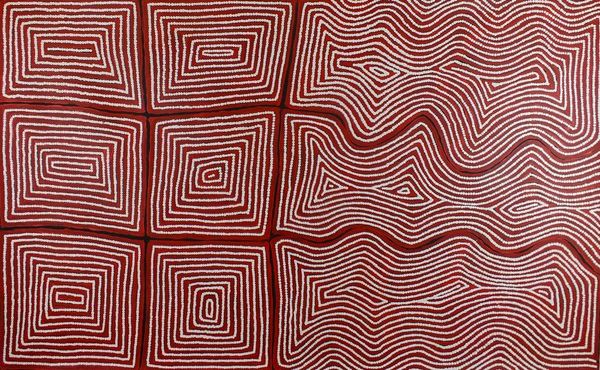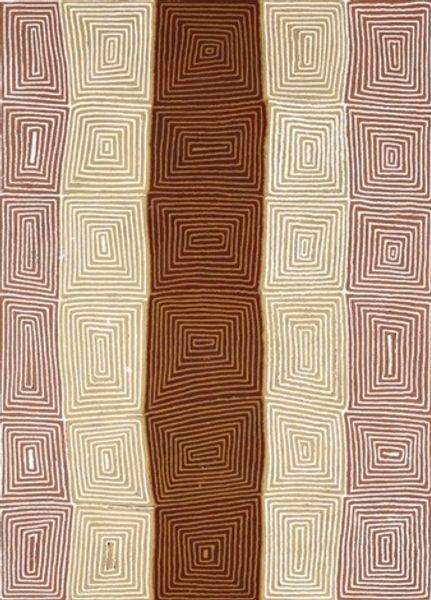
painting, acrylic-paint
#
natural stone pattern
#
naturalistic pattern
#
organic
#
painting
#
acrylic-paint
#
geometric pattern
#
abstract pattern
#
organic pattern
#
vertical pattern
#
abstraction
#
intricate pattern
#
line
#
pattern repetition
#
layered pattern
#
combined pattern
#
indigenous-americas
Copyright: Warlimpirrnga Tjapaltjarri,Fair Use
Curator: Before us, we have Warlimpirrnga Tjapaltjarri’s "Untitled (Tjuntulpul)", a piece dating from 1999. It’s rendered with acrylic paint, primarily displaying intricate patterns on the canvas. What strikes you immediately about this work? Editor: Well, initially, it reminds me of topographic maps—or even those intricate henna tattoos, you know? It's so dense with these winding lines and dots, creating this mesmerising, almost hypnotic landscape. There's an immediate feeling of rhythm. Curator: Rhythm is a pertinent observation. From a formal perspective, one can observe how the pattern repetition constructs an elaborate visual texture. It presents a non-figurative interpretation that recalls natural formations—the earth, perhaps. Editor: Earth… I like that. To me, it's like looking at the veins of the earth, or maybe a hidden city from above. There's a pulse to it, this sensation of things being connected. There’s an inherent complexity, where something organic meets deliberate precision. I wonder if that has something to do with Country, and ancient cartography. Curator: Indigenous Australian art is deeply rooted in the land, Country and Tjukurrpa or the Dreaming— ancestral narratives— serving not only aesthetic but also cosmological purposes. Looking closely, we can analyse its patterns—resembling ancestral tracks in their visual and metaphorical layers— suggesting narratives passed across time and geography. Editor: That makes so much sense! The lines feel less random, now that you say that; they tell a story even if I can’t ‘read’ it fully. There's something sacred and mysterious at play here. Curator: Precisely, its symbolic weight echoes cultural preservation; patterns operating like a form of cartography while preserving cultural heritage. The act of looking reveals complexity within its abstract nature, enriching appreciation of its cultural nuance. Editor: Right. You start to grasp how a painting can hold entire worlds, stories whispered over generations through visual cues. You can just lose yourself in its details! It makes you realise how limited just 'looking' can be. Curator: Indeed, analyzing a piece, particularly one so rich with symbolism, allows a more enriched engagement. It highlights how the intrinsic qualities of the art act in dialogue, revealing both technique and meaning. Editor: Yes. That makes a difference—spotting not just the pattern, but its purpose and intent. It gives depth, that shift from the immediate visual attraction to something…more, transformative almost.
Comments
No comments
Be the first to comment and join the conversation on the ultimate creative platform.
